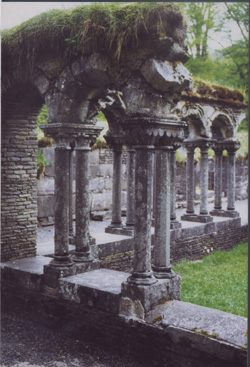 |
 |
 |
 |
 |
 |
 |
|
|
Cistercians Abbeys: LYSE Name:
LYSE Location: nr Bjorkasen District:
Os Lyse was founded by Bishop Siward, of the ancient see of Bergen,
after he visited the monks at Fountains. A group of monks arrived
in 1146 and they settled on a farm in Bergen. The full name of
the abbey was ‘Holy Maria Monastery in Lyse’ and was
one of five Cistercian monasteries to be founded in Norway. The
design
of the abbey was based on that of Fountains. The monks played a
significant role in the areas history. The community introduced
fruit growing in Hardanger, which is now the most famous fruit
area in Norway. The monks grew a variety of herbs and brought
the ‘Masterwort’
plant into the country, which was said to have been a strong medicine
and thought to have had magical powers. The monks also farmed the
surrounding land, fished for salmon in the river Os and transported
goods to England. The abbey was the largest in Norway and
possessed the finest orchards in Hardanger. |
